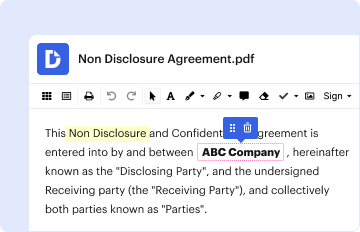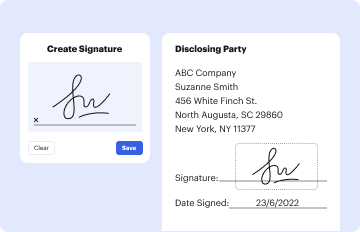Comprehensive Overview of Florida Energy Form 405
Florida Energy Form 405, also designated as Form R405, is a crucial document designed to ensure compliance with the Florida Energy Efficiency Code for building construction. It primarily focuses on residential projects, offering guidelines that enhance energy performance. This form helps builders and contractors maintain standards that contribute to energy conservation and reduced environmental impact in Florida's housing sector. Understanding the nuances of this form is essential for any construction professional working in Florida.
Key Elements of the Florida Energy Form 405
Florida Energy Form 405 encompasses various essential components aimed at detailing energy efficiency measures. These elements include:
-
Insulation Requirements: The form specifies the minimum insulation levels necessary for different parts of the building, such as walls, attics, and floors. Adhering to these guidelines helps maintain indoor climate control while reducing energy consumption.
-
Window Performance Standards: The form details the performance metrics for windows, including U-factor and solar heat gain coefficient (SHGC) values. These standards help ensure that the windows selected for the project minimize heat transfer and maximize natural light.
-
Heating and Cooling Systems: Specific efficiency requirements for HVAC systems are outlined in the form, which must meet or exceed the standards set by the Florida Energy Code to ensure effective energy use in residential settings.
-
Compliance Certification: Builders must provide documentation proving that their construction meets or exceeds the current energy code. This formal assurance is critical for regulatory compliance and to avoid penalties associated with non-compliance.
Steps to Complete Florida Energy Form 405
Completing the Florida Energy Form 405 involves several steps that contribute to a thorough submission. Here is a breakdown of the process:
-
Gather Necessary Information: Collect all relevant project details, including building type, square footage, and planned HVAC systems.
-
Analyze Energy Performance:
- Use energy calculations software to determine the building’s compliance with the Florida energy efficiency standards. Software tools can help estimate energy costs and identify potential savings.
-
Fill Out the Form: Complete all sections of the form accurately, ensuring that the data entered corresponds with the calculated energy performance metrics.
-
Obtain Required Signatures: Ensure that qualified professionals, such as energy raters or licensed engineers, sign off on the form, confirming compliance with the Florida Energy Code.
-
Submit the Form: Once completed, submit the form to the appropriate authority as part of the building permit process. This may involve online submissions or physical document delivery, depending on local regulations.
Importance of Compliance with Florida Energy Form 405
Maintaining compliance with the Florida Energy Form 405 is essential for several reasons:
-
Regulatory Adherence: Compliance ensures that all construction practices meet state laws designed to promote energy efficiency, reducing the risk of legal issues or fines.
-
Cost Savings: By adhering to these energy standards, builders and homeowners can significantly reduce ongoing energy costs, providing financial benefits over the life of the building.
-
Marketability: Homes built to meet or exceed these efficiency standards may be more appealing to buyers, as energy-efficient homes are often prioritized in the real estate market.
-
Environmental Impact: Buildings designed with these energy efficient guidelines contribute positively to the reduction of greenhouse gas emissions, promoting sustainable practices within the construction industry.
Typical Users of Florida Energy Form 405
The primary users of Florida Energy Form 405 include:
-
Builders and Developers: Professionals involved in residential construction who must ensure compliance with energy standards.
-
Architects and Engineers: Design professionals who incorporate energy-efficient designs and systems into residential projects.
-
Local Government Officials: Building inspectors and permit officers who review submissions and enforce compliance with energy efficiency regulations.
-
Homeowners: Individuals overseeing renovation or construction projects who need to be aware of energy efficiency requirements.
Variants and Updates to Florida Energy Form 405
The Florida Energy Form 405 has undergone updates to reflect changes in energy efficiency standards. Key variants include:
-
Form R: The most up-to-date version incorporating recent changes in building codes and energy efficiency requirements.
-
Form R and 2017: Older versions that may still be referenced in certain cases or for compliance evaluations in older buildings.
Staying updated on the specific iteration of the form being used is vital for compliance and to ensure all requirements are met.
Practical Examples of Using Florida Energy Form 405
Consider a residential construction project in Orlando, FL. Using Form 405, the builder collects project specifics and utilizes Florida energy calculations software to assess energy efficiency based on the planned design. After evaluating insulation types, window specifications, and HVAC systems against the benchmarks set within the form, the builder completes the submission with required signatures and submits it for permit approval.
Similarly, a homeowner planning a significant renovation can utilize the form to illustrate the energy efficiency improvements being made, thus ensuring compliance with local codes while also potentially qualifying for rebates or incentives for energy-efficient upgrades.
By thoroughly understanding and appropriately implementing the Florida Energy Form 405, construction professionals can facilitate a smoother building process, promote sustainability, and achieve compliance with crucial energy standards.



